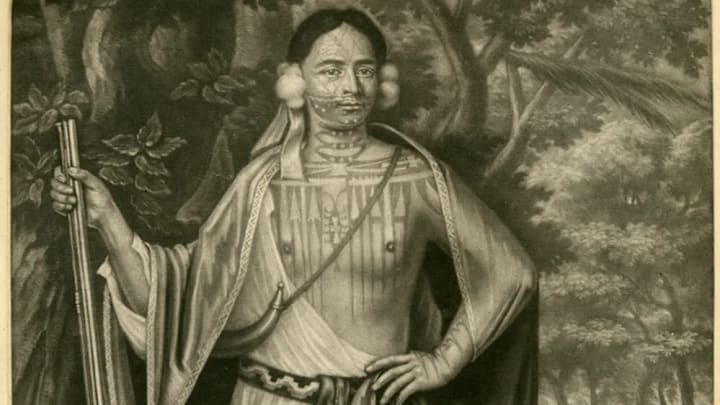A new exhibit highlights three centuries of tattooing taboos and trends in New York City.
The history of modern American tattooing is deeply tied to New York City. The Big Apple is where tattoo artist Samuel O’Reilly invented the first electric tattoo machine in 1891, transforming tattoos from the province of sailors and soldiers to a more popular decorative accessory. (It was even a high society fad for a while in the late 19th century.) Sites near the Financial District, Coney Island, and elsewhere were home to a thriving tattoo culture for many decades, but by the 1960s, tattooing was seen as a lower-class practice associated with criminals. The city’s Health Department banned it in 1961, citing fears of hepatitis, and tattooing remained illegal in New York for 35 years.
Artists organized to fight the ban, and today New York City is home to over 270 thriving tattoo shops that embrace a rich diversity of styles and traditions. “Tattooed New York,” on view at the New York Historical Society from February 3 until April 30, 2017, puts more than 250 objects on display in order to examine these waves of taboo and popularity over three centuries. Items on display include Native American tattooing tools, early flash (pre-made art) designs, signage from tattoo shops, and photographs of contemporary tattoo art. The exhibit will also feature live tattoo demonstrations on select Fridays and weekends—watch their website for details.

One of the oldest items in the exhibit is a portrait of a Mohawk tribal leader whose chest and face are covered in tattoos. For some Native American peoples, tattooing was a way of commemorating war victories. It was also used as part of healing ceremonies (designs would be placed over broken bones or sore joints) and as marks of protection.

For the sailors and soldiers who traveled the world in the 19th century, tattoos often served as a combination memento, good luck charm, and identification tool that couldn’t be lost after even the drunkest evening. Many of these tattoos involved patriotic or religious symbols, like the ones here. Tattoos could even help earn extra income—some sailors displayed themselves in pop-up sideshows while on shore leave.

Samuel O’Reilly’s electric tattoo machine was based on Thomas Edison’s Electric Autographic Pen (pictured here), a device originally created to duplicate handwritten documents and designs. Some say Edison even gave himself a few small tattoos on his hand while test-driving his invention.

As tattooing spread in popularity, a few women became famous as “tattooed ladies” who made a living by displaying their ink in sideshows. Nora Hildebrandt, daughter of tattoo artist Martin Hildebrandt, is often credited as the first professional tattooed lady. Said to have had over 365 tattoos, she exhibited herself in New York and then toured with Barnum & Bailey Circus. Other famous inked women from the era include La Belle Irene, “the original tattooed lady,” and Lady Viola, “the most beautiful tattooed lady in the world.”

Famed early 20th century tattoo artist Charlie Wagner took over Samuel O’Reilly’s tattoo shop on 11 Chatham Square, where he displayed the statue above. A 1933 book, Tattoo: Secrets of a Strange Art, describes the statue as being “hired out for freak millionaire playboy parties.”

In the 1920s and 1930s, the Bowery was a hotbed for tattoo culture. This painting by tattoo artist Ace Harlyn depicts famed tattoo artist Charlie Wagner inking Mildred Hull, who was known as the first—and only—female tattooist in the area. Like Nora Hildebrandt, she had over 300 tattoos, including 12 geishas on her legs and 14 angels on her back.

Flash―pre-drawn tattoo designs still common in tattoo parlors―was developed and popularized by Lew “the Jew” Alberts, who learned the craft in the Navy during the Spanish-American War and developed it further while working on the Bowery.

Coney Island was another center of working-class tattoo culture, with Bowery tattoo artists often operating temporary booths underneath the rides. In 1961, the city’s Health Department declared it “unlawful for any person to tattoo a human being,” citing an alleged outbreak of Hepatitis B cases at Coney Island tattoo parlors.

The ban drove tattoo artists underground, but they continued operating from home and in establishments disguised as other types of businesses, often working at night and with equipment that could be easily stashed in case of a raid.

The tattoo ban was lifted in 1997, and today hundreds of tattoo parlors are scattered across the five boroughs, working in a wide variety of traditions and styles. The New York Historical Society exhibition also includes videos filmed in tattoo studios, as well as highlights from contemporary artists.
